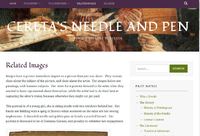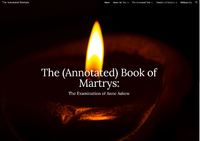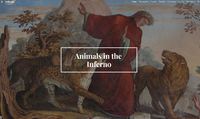-
 South Bend Civic Theatre
South Bend Civic Theatre South Bend Civic Theatre (SBCT) was founded in 1957 by two University of Notre Dame graduates who believed community theatre should be an important part of this area’s culture, and who also believed that living in our community were aspiring actors and actresses who needed to show and form their talents.
In January 2007, the beginning of the Civic’s 50th Anniversary year, SBCT celebrated the opening of its new home in the heart of downtown South Bend, in what had formerly been a First Church of Christ Scientist. The historic domed structure is an architectural wonder and sealed SBCT’s position as a pillar of the region’s art community.
-
 Civil Rights Heritage Center
Civil Rights Heritage Center Born from the efforts of Indiana University South Bend students and professors, the Civil Rights Heritage Center transformed a once-segregated city swimming pool into an active learning center. It explores the civil rights struggles of the past so people can take action in the present and build a better future.
-
 Planted in Tradition: Basil in Boccaccio's Decameron
Planted in Tradition: Basil in Boccaccio's Decameron The fifth story on the fourth day of Boccaccio's "The Decameron" tells a harrowing story of love, loss, and grief. A woman named Lisabetta keeps her murdered lover's head in a pot of basil and mourns over it until it is finally taken from her, leading to her tragic death from a broken heart. The macabre nature of this tale has captivated other artists, poets, and writers for centuries as it explores the nature of love and grief and their effects on the human psyche, but the tale itself was inspired by a long cultural history of the uses of basil. This digital exhibit seeks to explore and understand the cultural, literary, and religious significance of basil in order to provide a deeper insight to Lisabetta's story and to "The Decameron" as a complete work.
-
 Cereta's Needle and Pen
Cereta's Needle and Pen Laura Cereta is a female humanist from Northern Italy who lived from 1469-1499. She primarily wrote letters, as an accepted way to spread her ideas and show off her skills. The letters which she writes are to varied audiences, some of which are fictitious but many are real.
As a humanist she was educated in ancient languages, history, philosophy, and the Renaissance responses to the ancients. All her early schooling took place in a convent where she had a mentor in the prioress. The prioress taught her how to constructively harness her insomnia, something that shaped Cereta for the rest of her life.
As a woman, she was expected to care for her family and the house. She was given almost complete control over her siblings and care of the house at 12 years old and was married at 15 to Pietro Serina. Serina died about 18 months after they were married. This was a devastating blow to Cereta, who mourned through her letters.
The letters which Cereta wrote were primarily focused on accepted humanist topics, however she would on occasion write lavishly detailed descriptions of her embroidery. These descriptions place the embroidery needle on an equal footing with the humanists pen.
-
 The (Annotated) Book of Martyrs: The Examination of Anne Askew
The (Annotated) Book of Martyrs: The Examination of Anne Askew Welcome to our digital critical edition of John Foxe's Book of Martyrs! In particular, this website will focus on the Examination of Anne Askew, an individual chapter in Foxe's larger work. Our hope in annotating, analyzing, and making cultural connections within the original text is to put it in an accessible and useful context that will help readers better understand the circumstances of Anne Askew’s examination and execution.
-
 The Bertilak Museum
The Bertilak Museum This project is the website of fictional museum inspired by Sir Gawain and the Green Knight:
The Bertilak Museum was founded in Cornwall and strives to bring knowledge of Arthurian legends to the general public. We aim to inspire a passion for everything related to King Arthur in all of our visitors. Our museum hosts multiple interactive exhibits that will allow visitors to fully immerse themselves in the work of King Arthur and his knights. The Bertilak Museum is also proud to be involved with a series of traveling and temporary exhibits. We have partnered with other museums and projects devoted to the Arthurian world in order to share our latest research, our dedication, and our resources with countless fellow King Arthur enthusiasts from all over the world.
-
 Animals in the Inferno
Animals in the Inferno The Inferno was written by Dante Allgeri in the 14th century as part of a trilogy known as the Divine Comedy. The Inferno section follows Dante as he descends into hell. Within the work there are a lot of important figures from mythology and history. Three of these figures come in terms of the animals that greet Dante as he ends up on his journey to hell. A lion, a leopard, and a wolf all block Dante as he attempts to go back away from hell (Dante 5). These animals may seem to be random at first glance, but in reality they are much more than they seem.
These three beasts that Dante encounters while in the woods can be found in Jeremiah 5:6, which states that "a lion from the forest will attack them, a wolf from the desert will ravage them, a leopard will lie in wait near their towns to tear to pieces any who venture out, for their rebellion is great and their backslidings many.” The emergence of the lion, leopard, and wolf so early on in The Inferno quickly situate this work within a Christian context. This biblical reference, in tandem with Dante the Pilgrim's exploration of Hell, establishes Dante's work as one that will explore the complexities of religion, sin, and the afterlife.
-
 They Called Her Suong
They Called Her Suong For this assignment, I've decided to focus on the adoption of my oldest sister, Maria. Not only do I want to record an accurate family history, but I also want to construct a genuine and unembellished narrative of my sister's origins. In order to do so, I have chosen the following 5 categories as outlined in the assignment overview: visual analysis, material analysis, oral history, information visualization, and textual analysis. Please see "The Portfolio" tab at the top of the page for each of these different sections. In order to familiarize yourself with the background of Maria's adoption, please see "The Story" tab at the top of the page.
 South Bend Civic Theatre South Bend Civic Theatre (SBCT) was founded in 1957 by two University of Notre Dame graduates who believed community theatre should be an important part of this area’s culture, and who also believed that living in our community were aspiring actors and actresses who needed to show and form their talents. In January 2007, the beginning of the Civic’s 50th Anniversary year, SBCT celebrated the opening of its new home in the heart of downtown South Bend, in what had formerly been a First Church of Christ Scientist. The historic domed structure is an architectural wonder and sealed SBCT’s position as a pillar of the region’s art community.
South Bend Civic Theatre South Bend Civic Theatre (SBCT) was founded in 1957 by two University of Notre Dame graduates who believed community theatre should be an important part of this area’s culture, and who also believed that living in our community were aspiring actors and actresses who needed to show and form their talents. In January 2007, the beginning of the Civic’s 50th Anniversary year, SBCT celebrated the opening of its new home in the heart of downtown South Bend, in what had formerly been a First Church of Christ Scientist. The historic domed structure is an architectural wonder and sealed SBCT’s position as a pillar of the region’s art community. Civil Rights Heritage Center Born from the efforts of Indiana University South Bend students and professors, the Civil Rights Heritage Center transformed a once-segregated city swimming pool into an active learning center. It explores the civil rights struggles of the past so people can take action in the present and build a better future.
Civil Rights Heritage Center Born from the efforts of Indiana University South Bend students and professors, the Civil Rights Heritage Center transformed a once-segregated city swimming pool into an active learning center. It explores the civil rights struggles of the past so people can take action in the present and build a better future. Planted in Tradition: Basil in Boccaccio's Decameron The fifth story on the fourth day of Boccaccio's "The Decameron" tells a harrowing story of love, loss, and grief. A woman named Lisabetta keeps her murdered lover's head in a pot of basil and mourns over it until it is finally taken from her, leading to her tragic death from a broken heart. The macabre nature of this tale has captivated other artists, poets, and writers for centuries as it explores the nature of love and grief and their effects on the human psyche, but the tale itself was inspired by a long cultural history of the uses of basil. This digital exhibit seeks to explore and understand the cultural, literary, and religious significance of basil in order to provide a deeper insight to Lisabetta's story and to "The Decameron" as a complete work.
Planted in Tradition: Basil in Boccaccio's Decameron The fifth story on the fourth day of Boccaccio's "The Decameron" tells a harrowing story of love, loss, and grief. A woman named Lisabetta keeps her murdered lover's head in a pot of basil and mourns over it until it is finally taken from her, leading to her tragic death from a broken heart. The macabre nature of this tale has captivated other artists, poets, and writers for centuries as it explores the nature of love and grief and their effects on the human psyche, but the tale itself was inspired by a long cultural history of the uses of basil. This digital exhibit seeks to explore and understand the cultural, literary, and religious significance of basil in order to provide a deeper insight to Lisabetta's story and to "The Decameron" as a complete work. Cereta's Needle and Pen Laura Cereta is a female humanist from Northern Italy who lived from 1469-1499. She primarily wrote letters, as an accepted way to spread her ideas and show off her skills. The letters which she writes are to varied audiences, some of which are fictitious but many are real. As a humanist she was educated in ancient languages, history, philosophy, and the Renaissance responses to the ancients. All her early schooling took place in a convent where she had a mentor in the prioress. The prioress taught her how to constructively harness her insomnia, something that shaped Cereta for the rest of her life. As a woman, she was expected to care for her family and the house. She was given almost complete control over her siblings and care of the house at 12 years old and was married at 15 to Pietro Serina. Serina died about 18 months after they were married. This was a devastating blow to Cereta, who mourned through her letters. The letters which Cereta wrote were primarily focused on accepted humanist topics, however she would on occasion write lavishly detailed descriptions of her embroidery. These descriptions place the embroidery needle on an equal footing with the humanists pen.
Cereta's Needle and Pen Laura Cereta is a female humanist from Northern Italy who lived from 1469-1499. She primarily wrote letters, as an accepted way to spread her ideas and show off her skills. The letters which she writes are to varied audiences, some of which are fictitious but many are real. As a humanist she was educated in ancient languages, history, philosophy, and the Renaissance responses to the ancients. All her early schooling took place in a convent where she had a mentor in the prioress. The prioress taught her how to constructively harness her insomnia, something that shaped Cereta for the rest of her life. As a woman, she was expected to care for her family and the house. She was given almost complete control over her siblings and care of the house at 12 years old and was married at 15 to Pietro Serina. Serina died about 18 months after they were married. This was a devastating blow to Cereta, who mourned through her letters. The letters which Cereta wrote were primarily focused on accepted humanist topics, however she would on occasion write lavishly detailed descriptions of her embroidery. These descriptions place the embroidery needle on an equal footing with the humanists pen. The (Annotated) Book of Martyrs: The Examination of Anne Askew Welcome to our digital critical edition of John Foxe's Book of Martyrs! In particular, this website will focus on the Examination of Anne Askew, an individual chapter in Foxe's larger work. Our hope in annotating, analyzing, and making cultural connections within the original text is to put it in an accessible and useful context that will help readers better understand the circumstances of Anne Askew’s examination and execution.
The (Annotated) Book of Martyrs: The Examination of Anne Askew Welcome to our digital critical edition of John Foxe's Book of Martyrs! In particular, this website will focus on the Examination of Anne Askew, an individual chapter in Foxe's larger work. Our hope in annotating, analyzing, and making cultural connections within the original text is to put it in an accessible and useful context that will help readers better understand the circumstances of Anne Askew’s examination and execution. The Bertilak Museum This project is the website of fictional museum inspired by Sir Gawain and the Green Knight: The Bertilak Museum was founded in Cornwall and strives to bring knowledge of Arthurian legends to the general public. We aim to inspire a passion for everything related to King Arthur in all of our visitors. Our museum hosts multiple interactive exhibits that will allow visitors to fully immerse themselves in the work of King Arthur and his knights. The Bertilak Museum is also proud to be involved with a series of traveling and temporary exhibits. We have partnered with other museums and projects devoted to the Arthurian world in order to share our latest research, our dedication, and our resources with countless fellow King Arthur enthusiasts from all over the world.
The Bertilak Museum This project is the website of fictional museum inspired by Sir Gawain and the Green Knight: The Bertilak Museum was founded in Cornwall and strives to bring knowledge of Arthurian legends to the general public. We aim to inspire a passion for everything related to King Arthur in all of our visitors. Our museum hosts multiple interactive exhibits that will allow visitors to fully immerse themselves in the work of King Arthur and his knights. The Bertilak Museum is also proud to be involved with a series of traveling and temporary exhibits. We have partnered with other museums and projects devoted to the Arthurian world in order to share our latest research, our dedication, and our resources with countless fellow King Arthur enthusiasts from all over the world. Animals in the Inferno The Inferno was written by Dante Allgeri in the 14th century as part of a trilogy known as the Divine Comedy. The Inferno section follows Dante as he descends into hell. Within the work there are a lot of important figures from mythology and history. Three of these figures come in terms of the animals that greet Dante as he ends up on his journey to hell. A lion, a leopard, and a wolf all block Dante as he attempts to go back away from hell (Dante 5). These animals may seem to be random at first glance, but in reality they are much more than they seem. These three beasts that Dante encounters while in the woods can be found in Jeremiah 5:6, which states that "a lion from the forest will attack them, a wolf from the desert will ravage them, a leopard will lie in wait near their towns to tear to pieces any who venture out, for their rebellion is great and their backslidings many.” The emergence of the lion, leopard, and wolf so early on in The Inferno quickly situate this work within a Christian context. This biblical reference, in tandem with Dante the Pilgrim's exploration of Hell, establishes Dante's work as one that will explore the complexities of religion, sin, and the afterlife.
Animals in the Inferno The Inferno was written by Dante Allgeri in the 14th century as part of a trilogy known as the Divine Comedy. The Inferno section follows Dante as he descends into hell. Within the work there are a lot of important figures from mythology and history. Three of these figures come in terms of the animals that greet Dante as he ends up on his journey to hell. A lion, a leopard, and a wolf all block Dante as he attempts to go back away from hell (Dante 5). These animals may seem to be random at first glance, but in reality they are much more than they seem. These three beasts that Dante encounters while in the woods can be found in Jeremiah 5:6, which states that "a lion from the forest will attack them, a wolf from the desert will ravage them, a leopard will lie in wait near their towns to tear to pieces any who venture out, for their rebellion is great and their backslidings many.” The emergence of the lion, leopard, and wolf so early on in The Inferno quickly situate this work within a Christian context. This biblical reference, in tandem with Dante the Pilgrim's exploration of Hell, establishes Dante's work as one that will explore the complexities of religion, sin, and the afterlife. They Called Her Suong For this assignment, I've decided to focus on the adoption of my oldest sister, Maria. Not only do I want to record an accurate family history, but I also want to construct a genuine and unembellished narrative of my sister's origins. In order to do so, I have chosen the following 5 categories as outlined in the assignment overview: visual analysis, material analysis, oral history, information visualization, and textual analysis. Please see "The Portfolio" tab at the top of the page for each of these different sections. In order to familiarize yourself with the background of Maria's adoption, please see "The Story" tab at the top of the page.
They Called Her Suong For this assignment, I've decided to focus on the adoption of my oldest sister, Maria. Not only do I want to record an accurate family history, but I also want to construct a genuine and unembellished narrative of my sister's origins. In order to do so, I have chosen the following 5 categories as outlined in the assignment overview: visual analysis, material analysis, oral history, information visualization, and textual analysis. Please see "The Portfolio" tab at the top of the page for each of these different sections. In order to familiarize yourself with the background of Maria's adoption, please see "The Story" tab at the top of the page.
